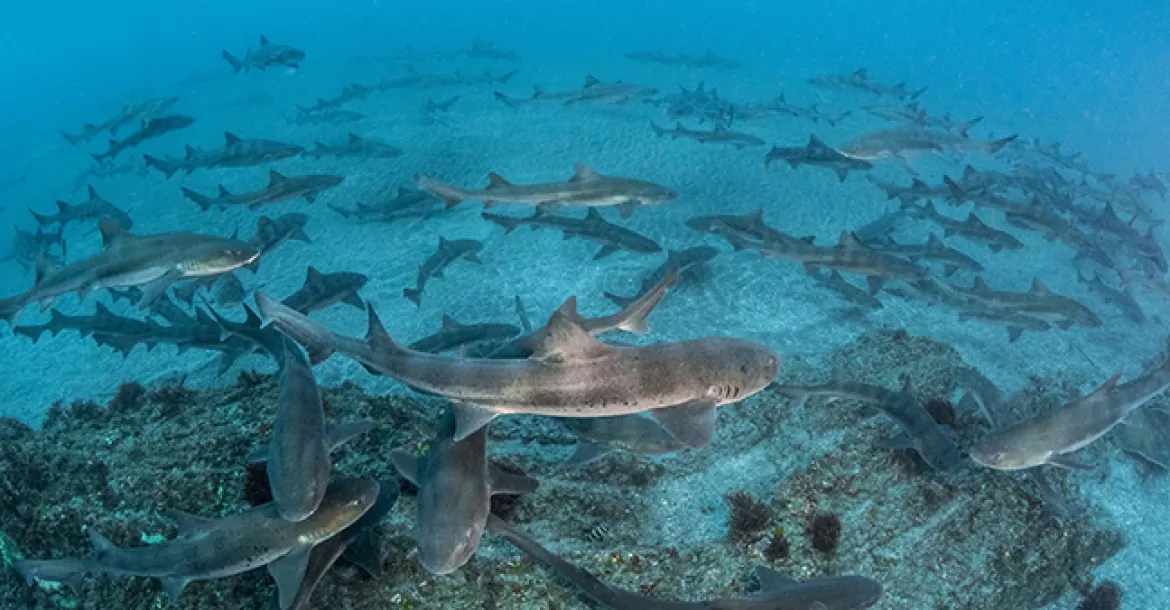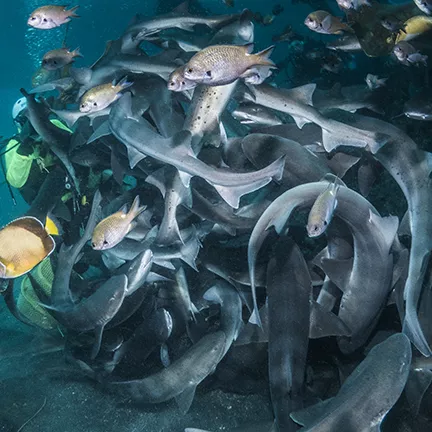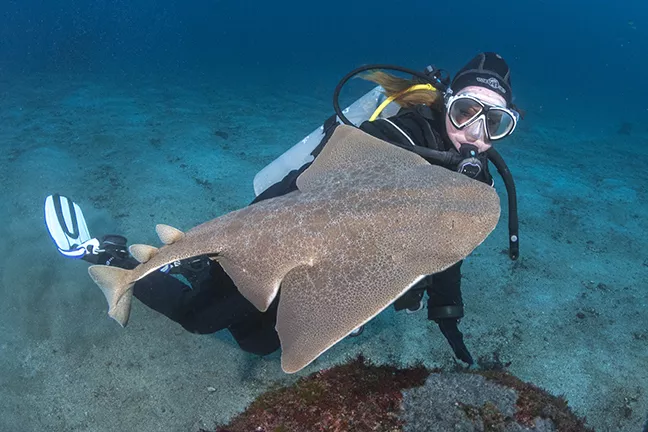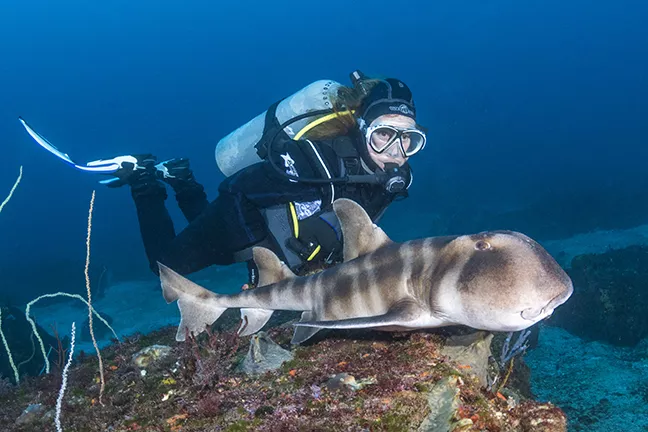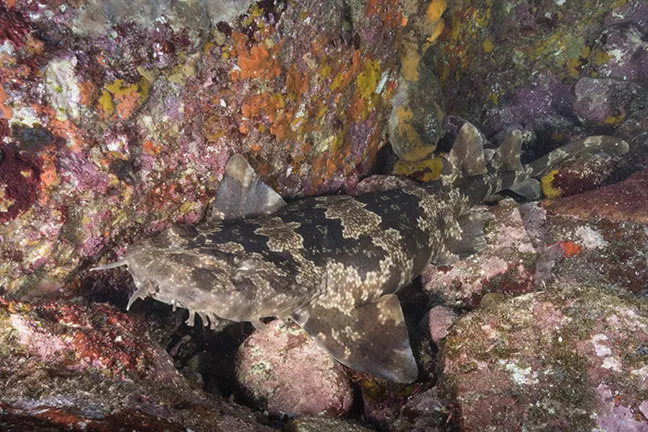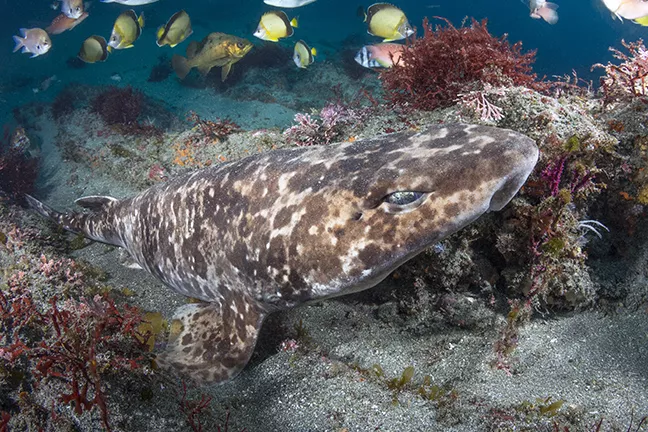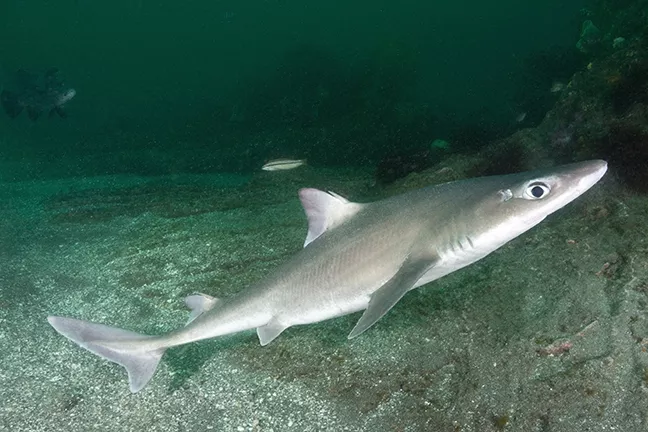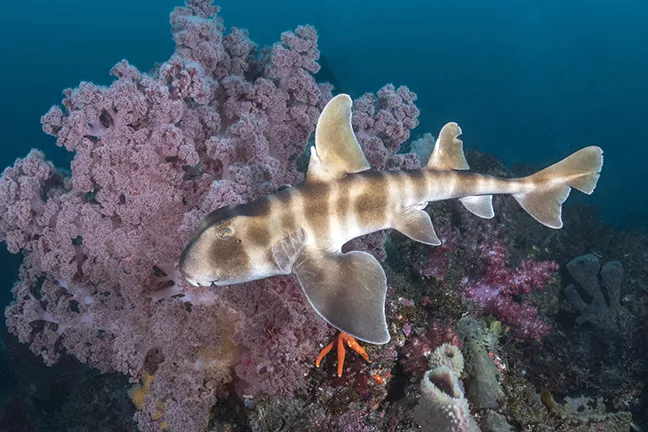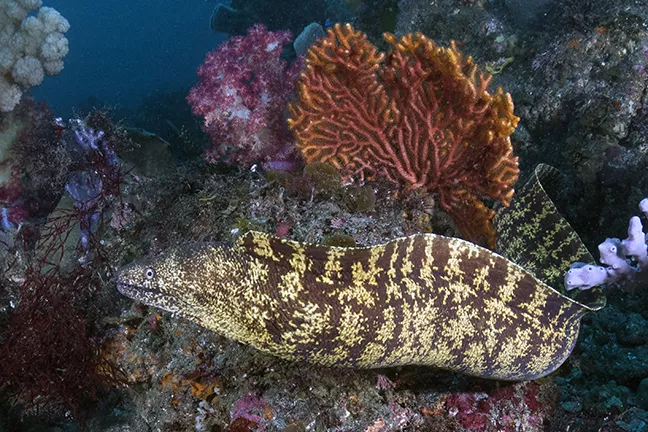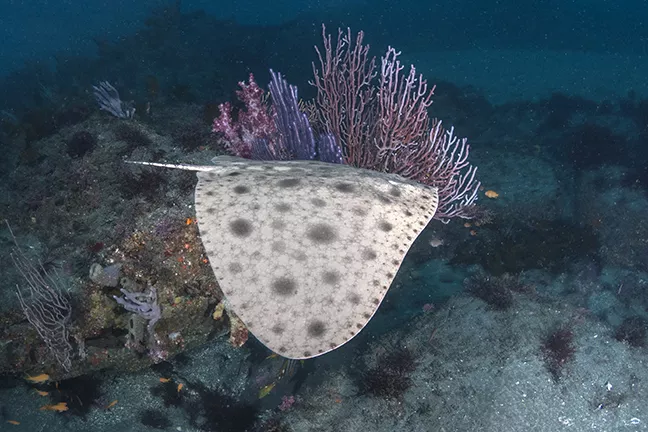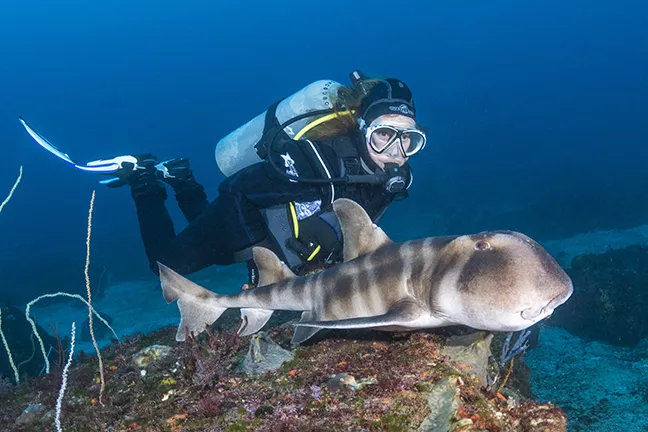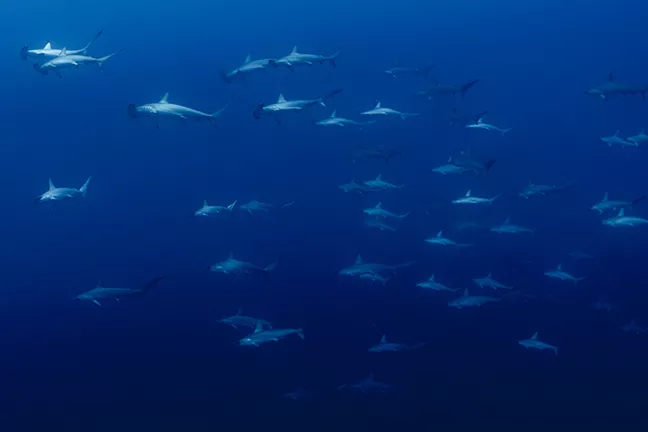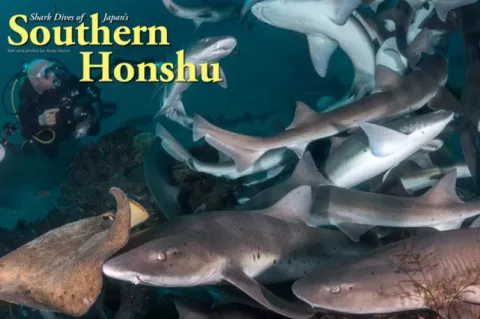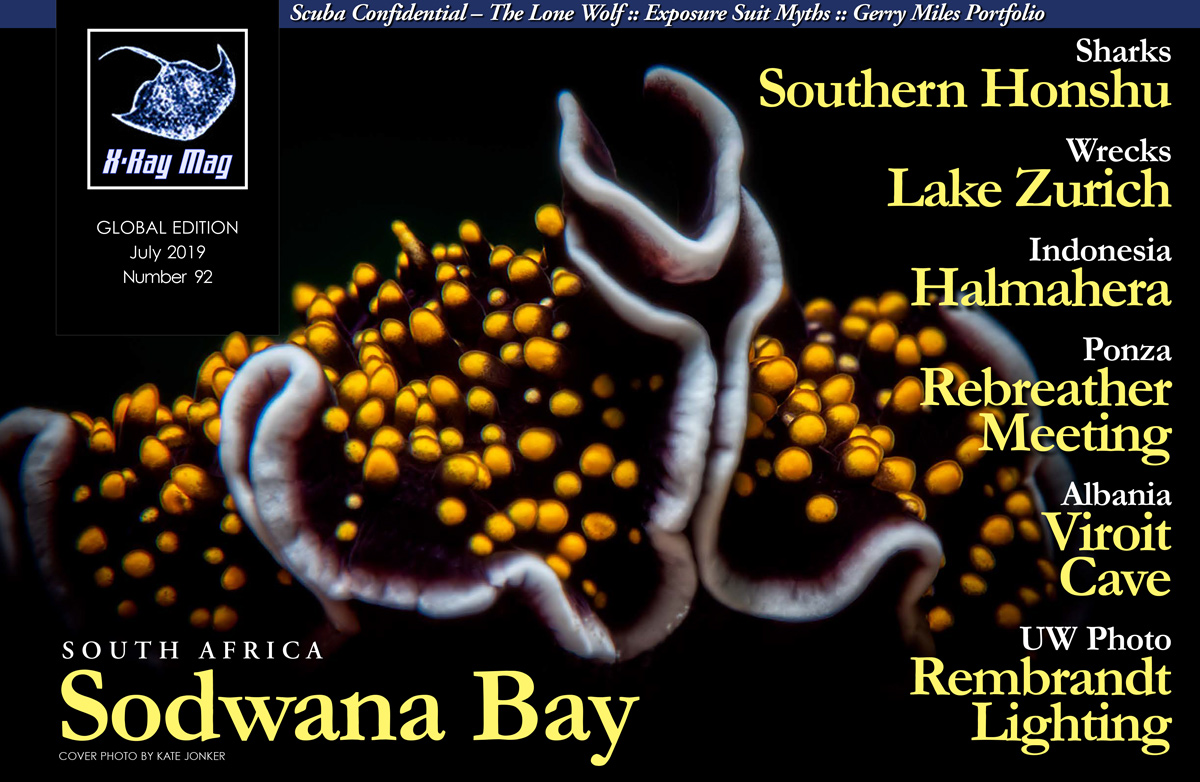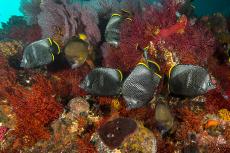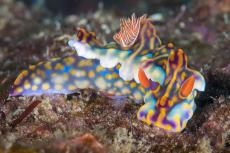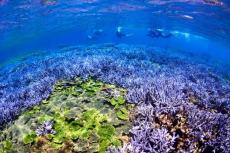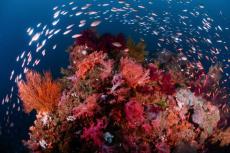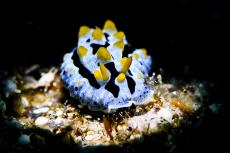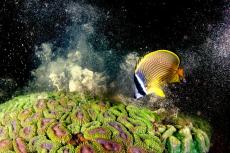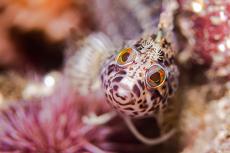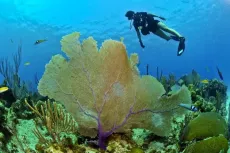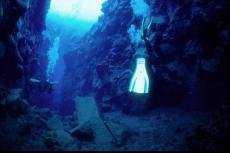For a relatively small nation, Japan has an exceptional degree of marine biodiversity—especially among sharks and rays. Exotic elasmobranchs can be encountered virtually anywhere along the meandering coastline of southern Honshu (Japan’s large central island), but there are a handful of hotspots that shark fans should try not to miss.
Contributed by
Factfile
Big Fish Expeditions runs a yearly Japanese Shark Diving Safari in southern Honshu.
For details, please visit: https://bigfishexpeditions.com/trips/scuba-diving/japan-shark-safari/
Andy Murch is an award-winning photographer, marine conservationist, author, journalist, explorer, dive instructor and submarine pilot based in British Columbia, Canada.
He is the founder and a trip leader of Big Fish Expeditions at: bigfishexpeditions.com.
Ito
Ito is a quaint little fishing village near Tateyama in Chiba Prefecture. From Ito’s tiny harbor, the ocean appears calm and tranquil, but a few hundred meters from shore, there are so many banded houndsharks that they block out the sun.
The shark encounter at Ito came about when avid diver Kan Shiota learned that local fishermen were having problems with sharks. The 1.5m-long predators were stealing fish and causing damage to the fishermen’s nets, so Kan had the brilliant idea of luring the sharks away from the fishermen to a site where he could bring divers to see them instead. On paper, it sounded great, but the houndsharks turned out to be much shier than he had anticipated. No matter how much bait he brought with him, the sharks remained extremely skittish, but Kan was undaunted.
Initially, he left a few fish on the reef and retired to the boat. After a few months of this, the sharks became more confident, and he was able to stay underwater with them, as long as he kept his distance. Once they got used to his bubbles, he crept closer, until they eventually grew comfortable enough for him to swim among them while they fed.
Encouraged by the houndsharks’ newfound bravery, Kan brought along some other divers, but the animals immediately panicked and disappeared again. It was extremely frustrating, but Kan refused to give up. After five long years, the sharks were finally habituated enough to tolerate large groups of noisy divers.
Today, the banded houndshark feed at Ito attracts hundreds of sharks, which completely ignore the humans swimming around them.
The feed at Ito also attracts scores of red stingrays that are easily as bold as the rays at Stingray City in the Cayman Islands. It is an impressive spectacle, watching the sharks and rays swirling around the bait crate. But it is not just the number of animals that makes the encounter interesting. Once the feed gets going, the sharks form a tightly woven ball of mouths and fins, which twists and writhes like one enormous cartilaginous organism—a real-life sharknado!
Beyond the shark feed, Ito’s lush soft coral reefs are also worth exploring. Exotic fishes of all shapes and sizes abound, and it is not uncommon to find zebra-striped Japanese horn sharks secreted away under dark overhangs. Lucky divers may even run into an intricately patterned Japanese butterfly ray or two, gliding gracefully over the seafloor.
Hatsushima Island
Farther west, around Tokyo Bay, Hatsushima Island is another must-see destination for avid shark divers. The island is home to some of the largest Japanese horn sharks you could ever hope to point a camera at. But the most notable predators here are the Japanese angelsharks. Over the winter months, angelsharks migrate inshore from deep water and take up residence on the sand flats surrounding the island’s shallow reefs.
Superficially ray-like in appearance, the flattened sharks flex their pectoral fins until a fine layer of sand covers them to the point of invisibility. With just their eyes and spiracles exposed, the angels wait patiently for a hapless fish to swim within striking distance. Then they explode upwards, mouth agape, clamping down on their prey with needle-sharp teeth.
Their camouflage is so good that finding these two-meter-long sharks can be quite a challenge for first-timers, but a methodical search of the sand within a few meters of the reef should yield numerous animals.
Like Ito, the rocky reefs around Hatsushima are well stocked with colorful marine life. Large schools of fish swim back and forth, and kidako morays appear to inhabit every crevice large enough to accommodate them. The island itself is quite small, so there are a limited number of dive sites. But it is well worth the effort to get to this little gem, located off the eastern coast of the Izu Peninsula.
Mikomoto Island
Way down at the bottom of Izu lies tiny Mikomoto Island—a barren outcrop of rock topped by a lonely lighthouse. Based on the drab terrestrial terrain, one might be tempted to skip Mikomoto completely, but that would be a huge mistake. In September and October, the island attracts hundreds of schooling scalloped hammerheads as well as other pelagic shark species, such as grey reef sharks and oceanic blacktip sharks.
Although the hammerheads are an impressive sight, they can, of course, be seen at numerous other destinations around the world. But Mikomoto Island is an excellent place to spot another of Japan’s endemic shark species—the cryptically-patterned Japanese wobbegong shark.
Like angelsharks, Japanese wobbegongs are ambush predators, which lay in wait for fish to swim within range of their impressive fanglike dentition. But unlike angelsharks, wobbegongs do not bury themselves under the sand. They simply lounge on the reef, relying on their complex camouflage to blend into the background—a strategy that is surprisingly effective.
Among the 12 species of wobbegongs that have been described so far, Japanese wobbegongs are the only ones that occur in the Northern Hemisphere. How they ended up in Japan is a mystery, but it is likely that they moved north millions of years ago, perhaps looking for a better food supply. Finding no competition on the lush reefs of southern Honshu, they flourished, and over time, evolved into a uniquely Japanese species.
Mikomoto’s wobbegongs are very easy to spot during the winter months, but there are usually a few that remain throughout the summer—in case you prefer to go when conditions are more pleasant. The island also supports a healthy colony of angelsharks, albeit in deeper waters than those at Hatsushima Island.
Other endemic shark species
Although rarely seen, there are many more endemic shark species that divers occasionally run into in Japan. For example, when exploring Honshu’s deeper reefs, it is worth looking under overhangs for blotchy swell sharks. Like so many Japanese species, this secretive shark is easy to miss because of its subtle camouflage.
Swell sharks are so named because they can inflate their stomachs with water in order to securely wedge themselves into crevices or simply to look bigger and scarier to would-be assailants.
Other rarities include the star-spotted smoothhound, a shy species that hunts over sandy areas for crustaceans and mollusks, and the Japanese spurdog, an Asian relative of the Atlantic spiny dogfish.
Whether you are a true shark fanatic or just an adventurous diver looking for an interesting new destination, Honshu is a wonderful island to explore and the perfect place to add a whole lot of new shark species to your life list. ■

